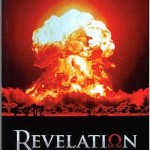
“I am he that liveth, and was dead; and, behold, I am alive for evermore, Amen; and have the keys of hell and of death. Write the things which thou hast seen, and the things which are, and the things which shall be hereafter; The mystery of the seven stars which thou sawest in my right hand, and the seven golden candlesticks. The seven stars are the angels of the seven churches: and the seven candlesticks which thou sawest are the seven churches.” (Revelation 1:18-20).
Jesus identifies Himself as the one who conquered death, the grave, and He then assures His followers that He has power over both (v. 18). He said to His disciples, “Yet a little while, and the world seeth me no more; but ye see me: because I live, ye shall live also” (John 14:19). Jesus always practiced what He preached!
Perhaps no other verse in the book is more misunderstood than verse 19. John was instructed to “Write the things which thou hast seen, and the things which are, and the things which shall be hereafter…” Most commentators claim this verse as the key that unlocks the book of Revelation. Their standard interpretation is, “the things which thou hast seen,” speaks of the glorified Christ in the midst of the churches. The “things which are,” they say, are the churches themselves in this dispensation, and “the things which shall be hereafter,” are those things which follow the rapture of the church which is thought to take place in chapter 4.
This interpretation is based on how they view John in relation to time. They do not view John as being in the “Day of the Lord” when he wrote the first three chapters. To them, John was in the church age and is prewriting church history. This, they say, is the “things which are.” The problem with this interpretation is that not one verse supports that view. In addition, it would be impossible for anyone to understand the Revelation without a working knowledge of church history. The letters to these seven churches were not written to help us understand past church history. They were written for the sake of those that will exist in the Day of the Lord. If the seven churches are going to be raptured in chapter four, what was the purpose of the letters? If the church is raptured prior to the tribulation, why write to them about being “over comers?” Finally, if the letters are to churches of this dispensation, to whom is the remainder of the book written?
As stated earlier, John had seen all of the Day of the Lord prior to writing the first verse of chapter 1. Furthermore, he was transported forward into the existing assemblies and was required to “turn” to view them. John is standing in the Day of the Lord when he writes verse 19. It is common practice for a writer to complete his entire thesis or book and then write the introduction. This is what John did. After he had seen the complete Revelation, he introduced it. Therefore, John had seen the complete revelation, which included the glorified Christ in the midst of the churches, and the churches in the tribulation.
The things “which are,” are not the things which are now in this church dispensation, but are the things which were contemporary to the vision. The “things which shall be hereafter,” are those things which followed the prophetic letters to the churches. Everything within the verse is for a time in the future.
In verse 20, John is made to understand the meaning of what he saw. No doubt the angel “signified” the vision to him. The stars are the angels to the churches. Jesus is called a star in Numbers 24:17. “…there shall come a Star out of Jacob, and a Sceptre shall rise out of Israel, and shall smite the corners of Moab, and destroy all the children of Sheth.” We need not think of these stars as luminaries in the heavens, but rather these angels are the pastors or elders of these Jewish synagogues. Elders may have a representative angel in heaven, but it seems rather unlikely that John would be instructed to write them. What could possibly be the purpose of writing to angelic beings, if a pastor of flesh and blood would be needed to pastor each assembly? The candlesticks are the Jewish synagogues. There is no need to seek a different meaning than that given to John. The candlesticks were for light and a converted Israel is to be the light of the world.
Notice that these stars are in His “right hand.” This speaks of Israel and their security during the Day of the Lord, if they will “abide in the Vine” and overcome the mark of the Beast. No doubt this is the intended meaning of John 10:28-29, “And I give unto them eternal life; and they shall never perish, neither shall any man pluck them out of my hand. My Father, which gave them me, is greater than all; and no man is able to pluck them out of my Father’s hand.” Believers of this dispensation are not in Christ’s hand. They are in Him and He is in them. God’s people today are, “bone of His bone and flesh of His flesh.”
Pastor Ken Blue was born in Boswell, Ark. In 1955 he accepted Christ as his Savior. He and his wife Joyce were married in 1955. They have 5 children. He graduated from Midwestern Baptist Bible College in 1969 and started the Open Door Baptist Church in Lynnwood, Wa. where he pastored for 39 years. Because of health issues (ALS) he was forced to resign as pastor. It is his desire to continue to be used of God to help pastors and believers through this ministry.
